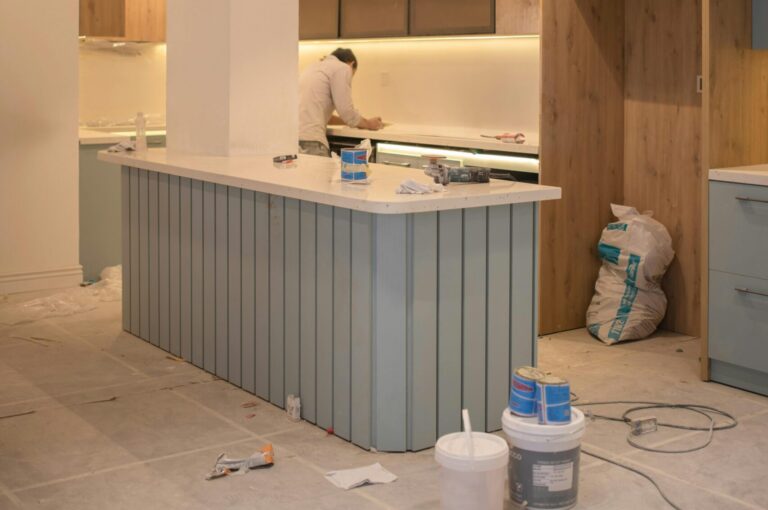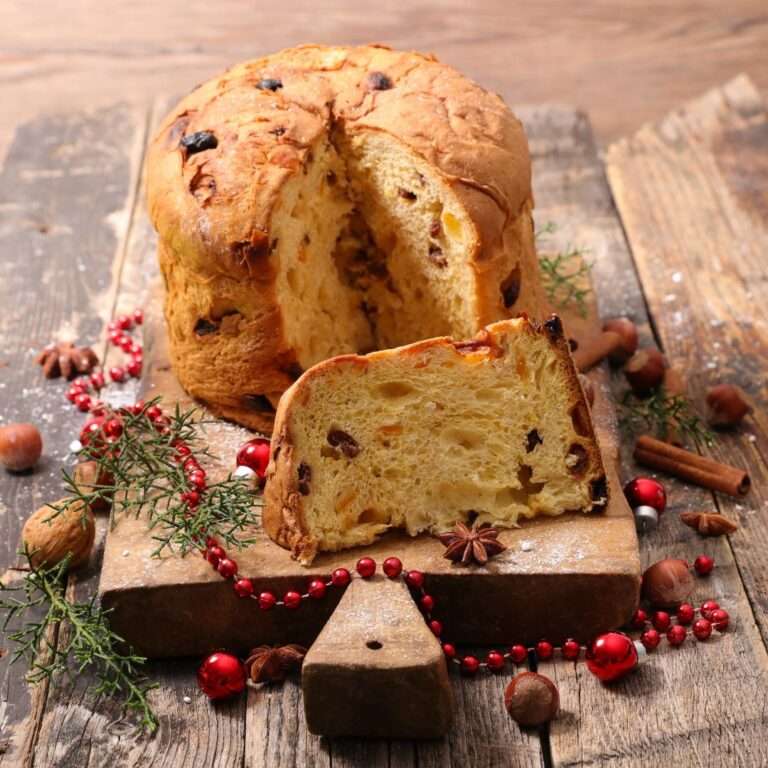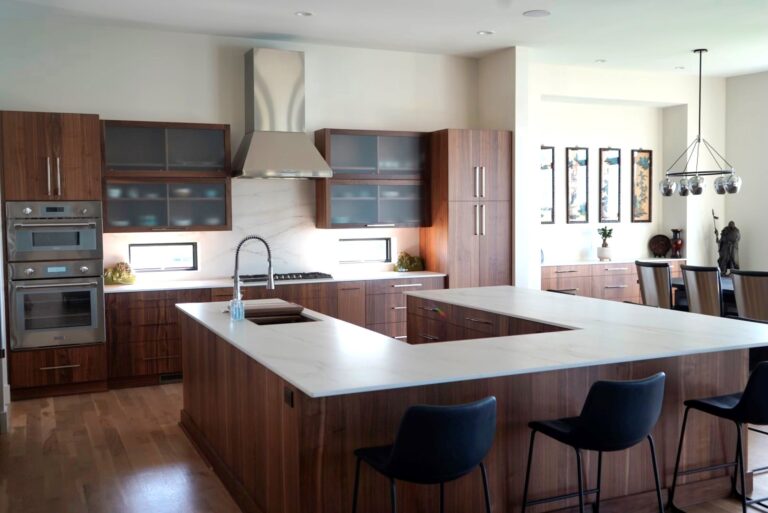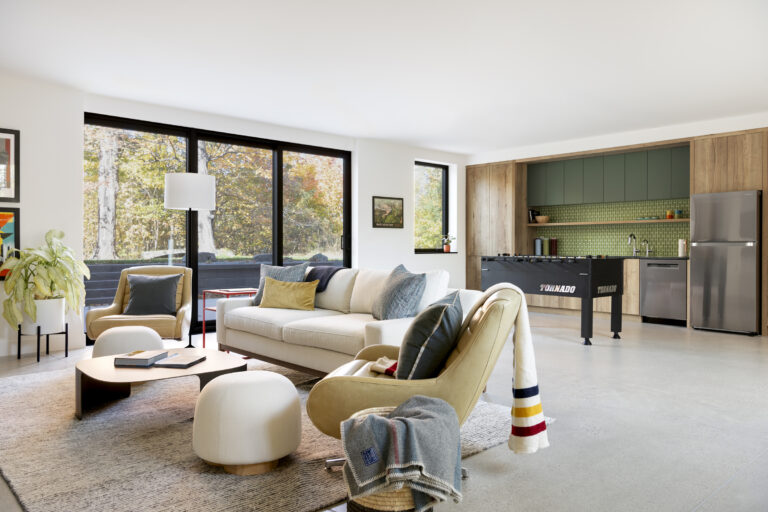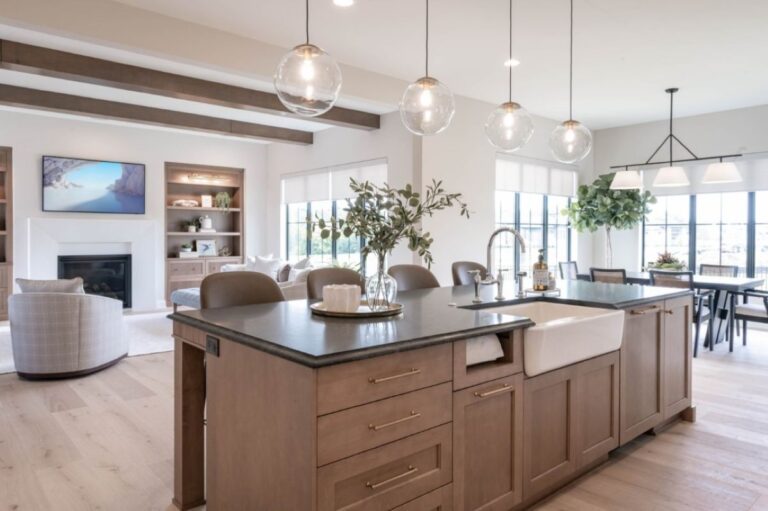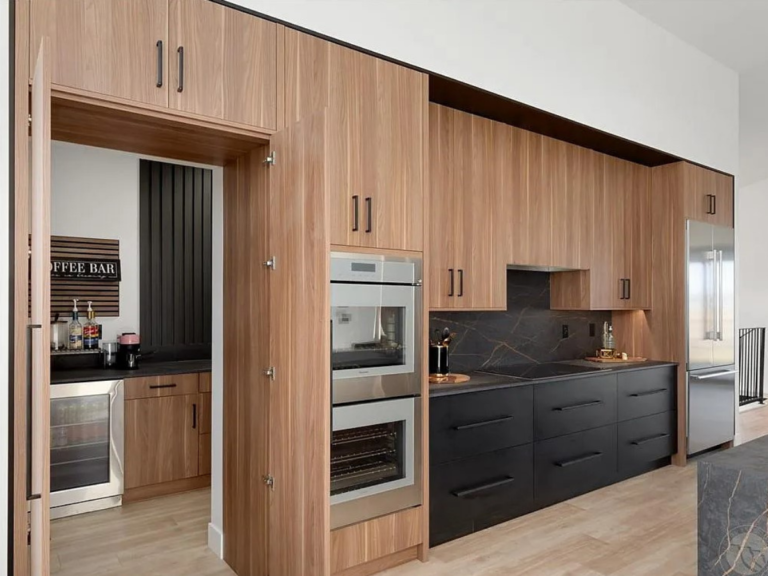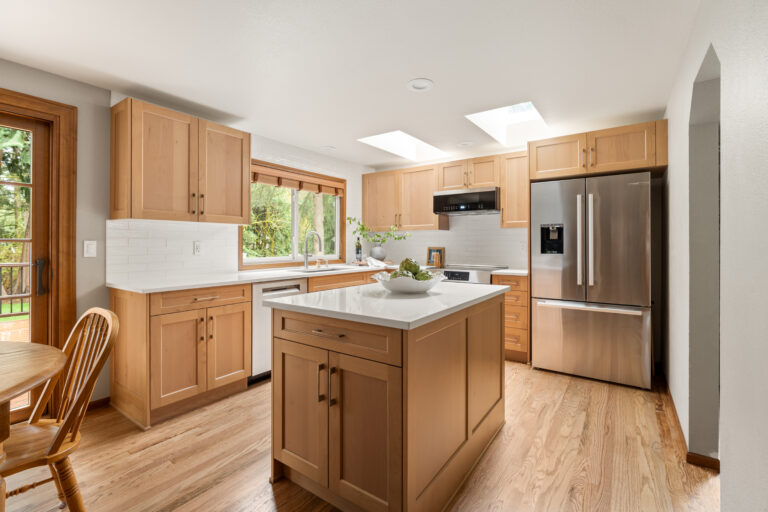Cabinets are more than pretty doors and hardware
The materials, thickness, and construction of your cabinet boxes and shelves play a big role in how well your kitchen holds up over time.
Whether you’re designing a kitchen, laundry room, or mudroom, understanding what goes into the cabinet structure can help you make smarter decisions—especially when it comes to durability.
So let’s start with some of the most common questions:
How thick should the cabinet box and shelves be for long-term durability?
For everyday use and long-term performance, look for cabinet boxes with 5/8″ thick construction (this is industry standard for mid-to-high-end frameless cabinets) and adjustable shelves at 3/4″ thickness. This combination helps cabinets stay sturdy, resist sagging, and hold up to the weight of dishes, food, or cleaning supplies.

What Are Cabinet Boxes Made Of?
The cabinet box—also called the case—is what gives a cabinet its shape and strength. It includes the sides, top, bottom, and back, along with any interior shelves.
At Decor Cabinets, we build our cabinet boxes using:
5/8″ thick melamine-covered particleboard for the sides, top, and bottom
Dowels and glue to secure each joint
PVC edge banding on all front-facing edges to protect the core and match the chosen finish
These materials are chosen to provide reliable structure, easy maintenance, and long-term durability.
Cabinet back panels are 1/4″ melamine-covered hardboard which are dadoed and glued for added stability. Lower cost options may use stapled on backs, which are much weaker.
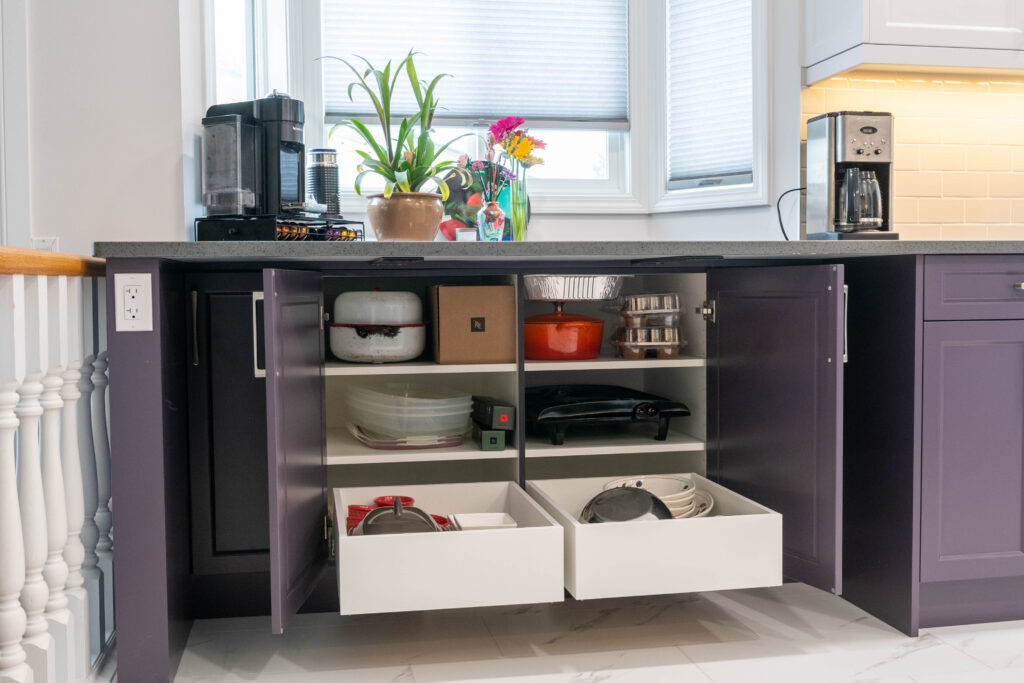
Interior vs. Exterior: What’s Visible and What’s Not
When you open a cabinet door, the inside is what you see. That’s the case material—typically white melamine unless you choose a different finish. It’s not visible when the doors are closed because it’s the functional part of the cabinet, not usually the decorative one. While you can customize the interior color, there are fewer finish options since it has less impact on the overall design.
The outside of the cabinet box is finished—especially for end cabinets or islands where the sides are exposed. This can be a separate end panel attached to the cabinet, but more often it’s a finished side built right into the case. That means melamine on the inside and a veneer on the outside, stained or painted to match the cabinet doors.
For cabinets in the middle of a run, there’s no need for a finished (or pretty) side because the cabinet sides are tucked between two others. But when the end of a cabinet is visible, a finished side is chosen to match the door, keeping everything consistent and cohesive.
Color Options for Case Material
The default cabinet interior is white melamine, but we offer several finish choices to coordinate with your overall design:
White melamine (default)
Natural maple melamine
Walnut melamine
For exterior colors check out our materials and finishes page here.
Edge Banding: Door Match vs. Case Match
Every visible edge of the cabinet box is finished with banding. This protects the materials and gives a clean appearance.
Case Match Banding matches the case color. This is the most common choice today for a streamlined, modern aesthetic.
Door Match Banding matches the cabinet door instead. It’s more traditional and often used where sides are exposed.
We recommend case match banding for most projects—it blends better with interior finishes and lets the door remain the design focal point.
Example: Case Match Edge Banding
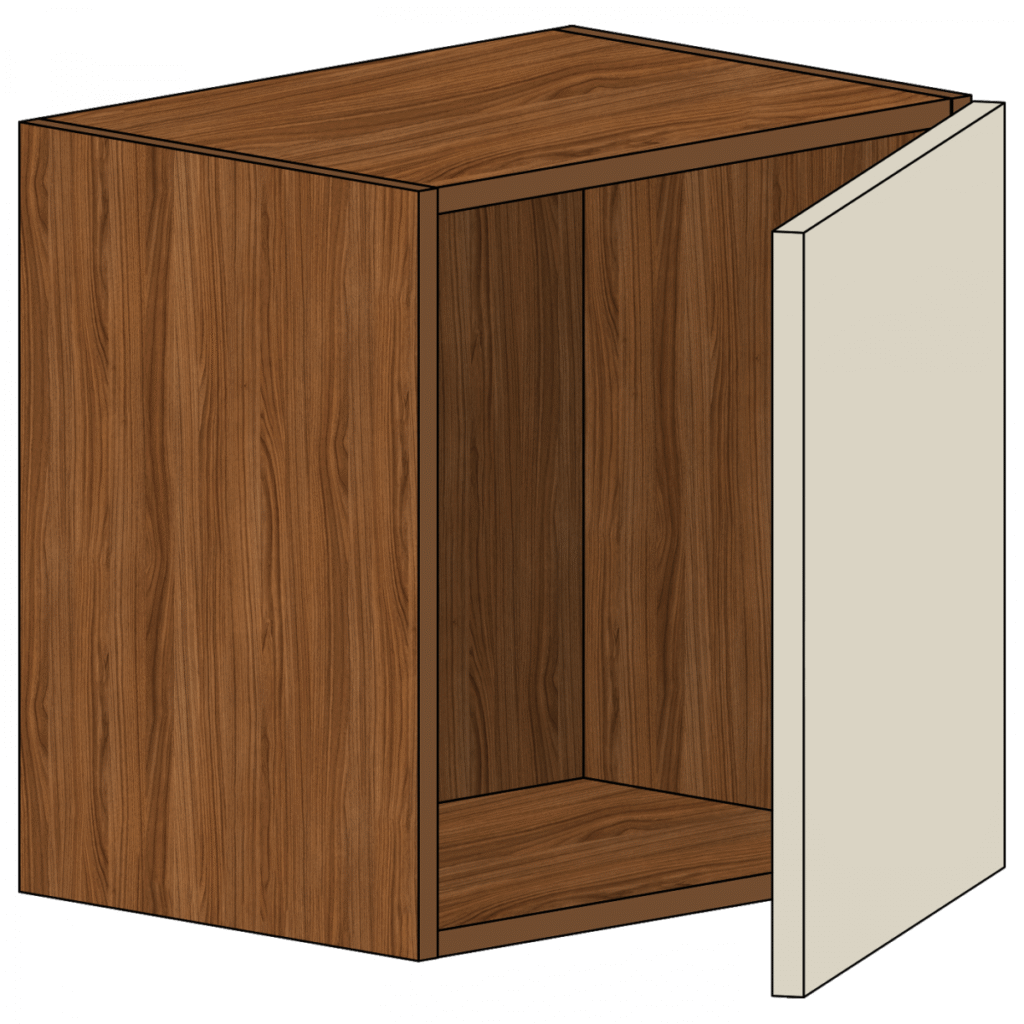
Walnut case material with matching edge banding.
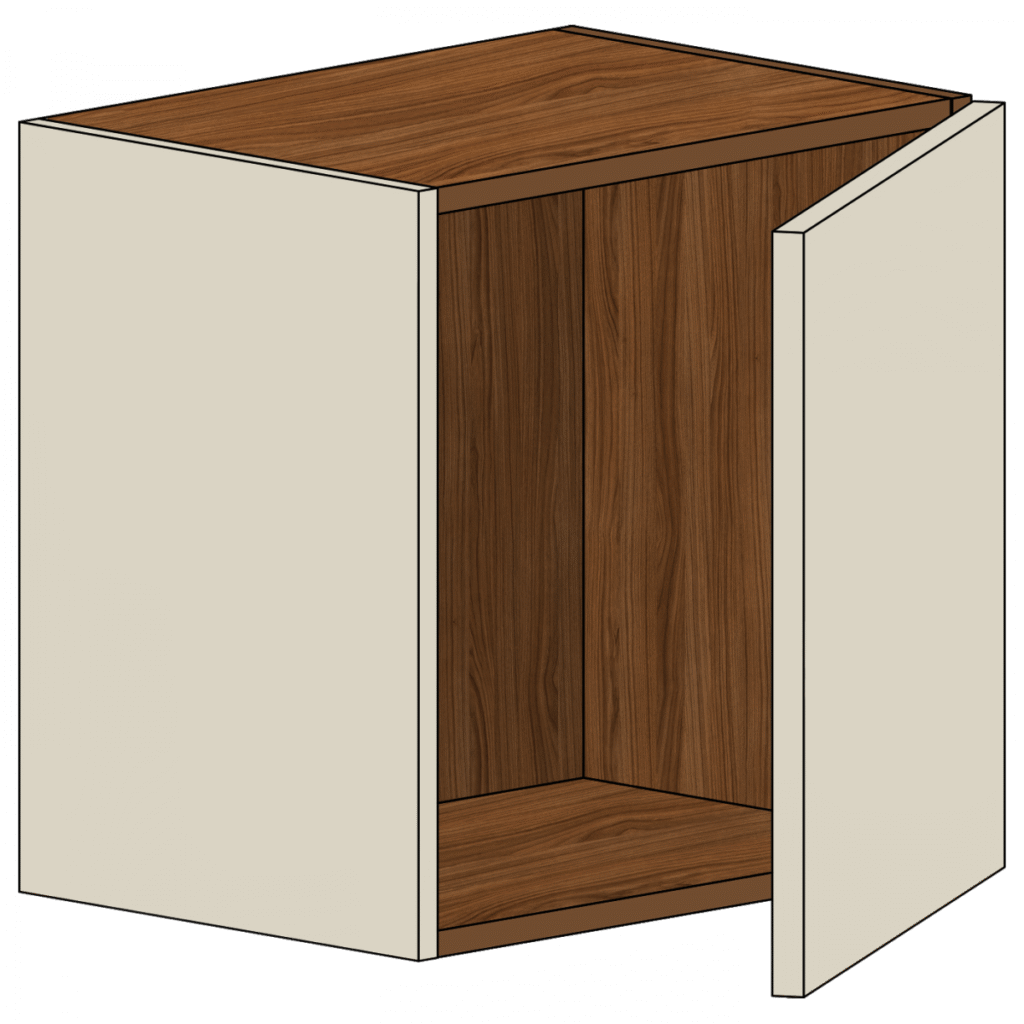
Walnut case material with matching edge banding and one finished side.
Example: Door Match Edge Banding
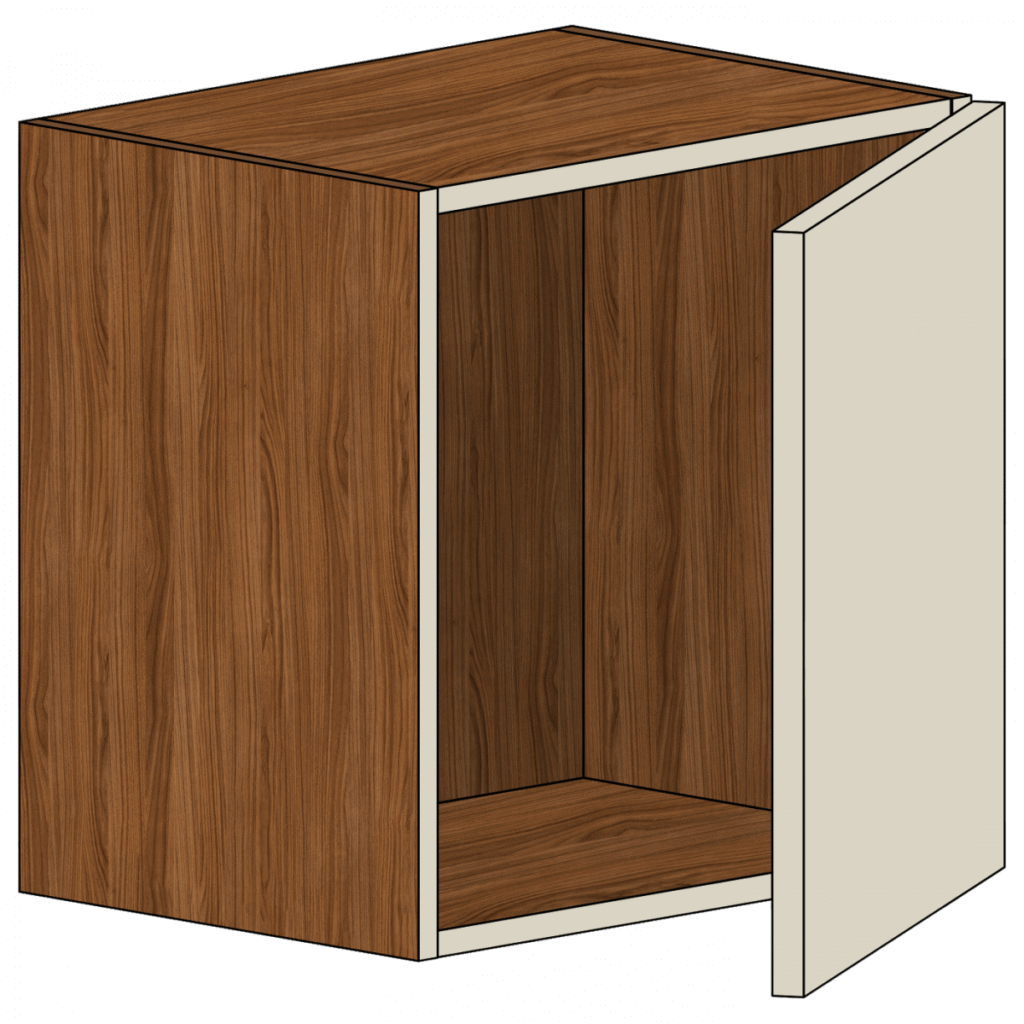
Walnut case material with door match edge banding.
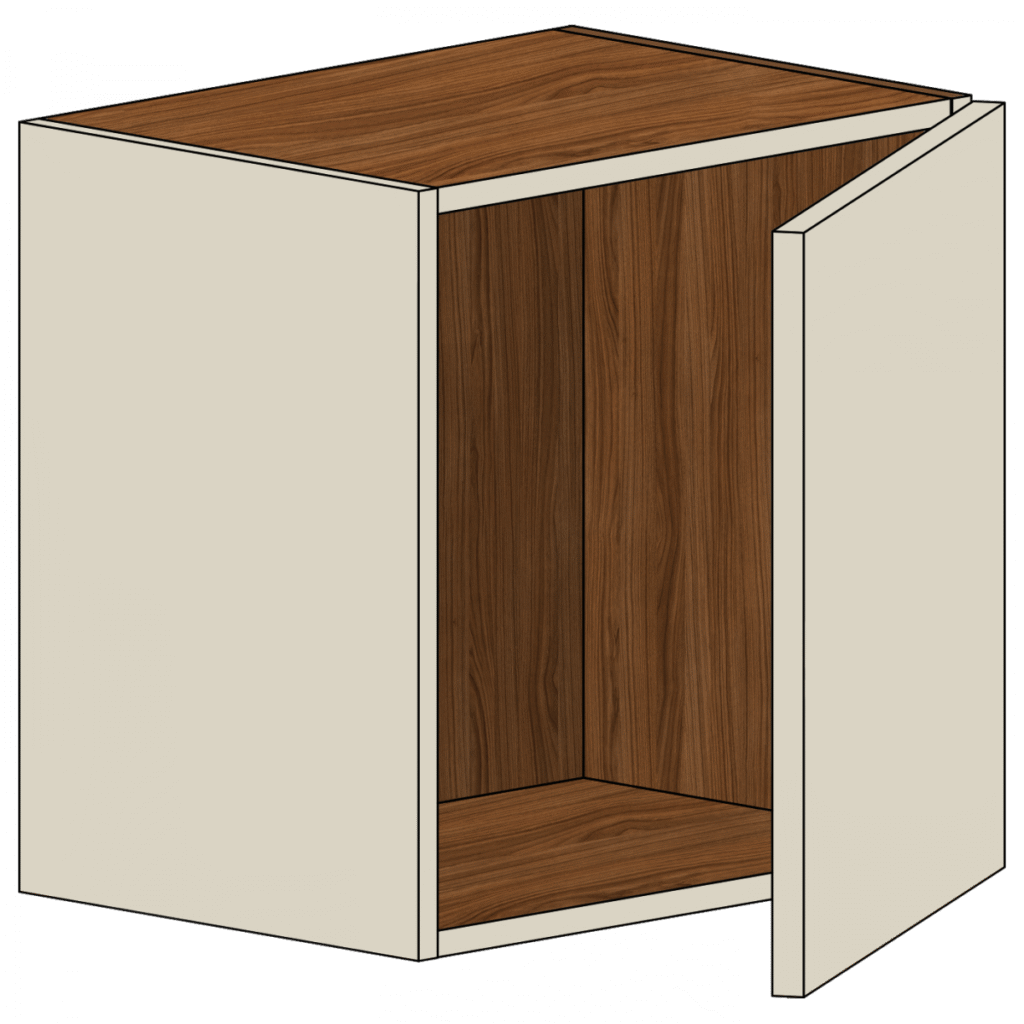
Walnut case material with door match edge banding and one finished side.
Understanding Shelves: Fixed vs. Adjustable
Cabinet shelves come in different thicknesses and finishes, depending on where and how they’re used.
Adjustable Shelves:
These shelves move up or down to fit your storage needs.
- 3/4″ melamine-covered particleboard (this is above standard)
- 1mm PVC edge banding to match the case color
This thickness helps prevent sagging, especially when storing dishes or pantry items.
Fixed Shelves:
These are permanently glued into the cabinet.
- 5/8″ melamine-covered particleboard
- Same edge banding options as adjustable shelves
They help reinforce the structure of the box.
Finished Adjustable Shelves:
In cabinets with visible interiors—like those with glass doors—we upgrade the shelf material:
- 3/4″ veneer-covered particleboard
- Finished on both sides to match the door
- Veneer edge banding to complete the look
Quick Specs Recap for Cabinet Boxes and Shelves
| Component | Thickness | Material |
|---|---|---|
| Box Sides, Top, Bottom | 5/8″ | Melamine-covered particleboard |
| Back (standard) | 1/4″ | Melamine-covered hardboard |
| Back (finished interior) | 3/4″ | Melamine |
| Adjustable Shelves | 3/4″ | Melamine-covered particleboard |
| Fixed Shelves | 5/8″ | Melamine-covered particleboard |
| Finished Adjustable Shelf | 3/4″ | Veneer-covered particleboard |


